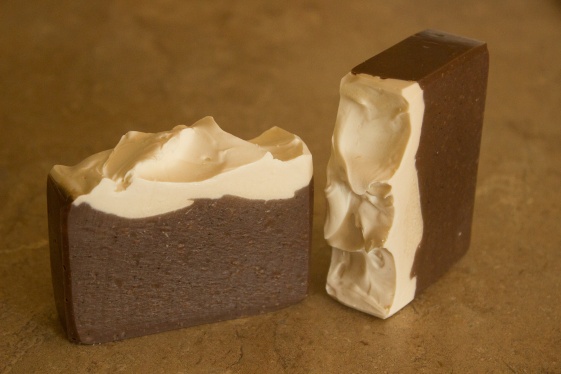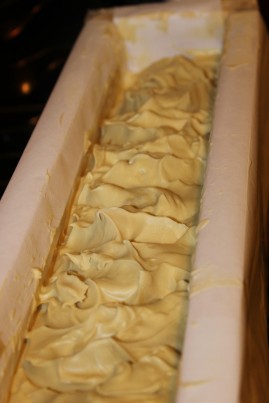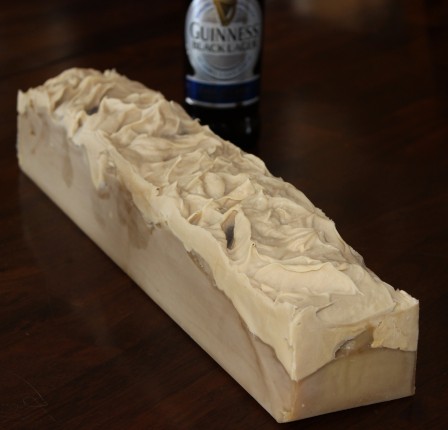Lately, I’ve really been into making soap using different liquids instead of just plain water. I do love a good water-based bar of soap, but there’s something intriguing about adding in different milks, beer, yogurt, champagne (like this soap), wine, green tea (check this soap out), coffee, or other liquids. The lather often changes (for the better), as well as the colors and texture of the soap. It’s a bit risky to experiment with, but it’s very rewarding and fun. After making a black lager soap about this time last year, I wanted to try something similar but new. This is my latest creation!
This soap was inspired by an incredible fragrance that I recently purchased from Bramble Berry called Oatmeal Stout. You can’t use that fragrance and NOT use beer as the liquid, right? I opened up a bottle of beer, poured it into my lye pitcher and let it sit open and in the cold for a few days, stirring it every so often, letting it get flat. Then, I made the lye solution by adding in about a tablespoon of lye at a time very slowly. No lye solution volcanoes for me!
I let it cool as I prepped the other ingredients, then carefully poured the beer lye solution into my oils and pulsed the stick blender for about 30 seconds just to emulsify them. After pouring off a few cups of soap to make a frothy white “head” for the soap, I whisked in my fragrance as well as some finely ground oatmeal to the rest of the batter. As expected, the soap got to a thick trace pretty quickly due to the sugars in the beer. The white “froth” on top looked good enough to eat, like a lovely whipped frosting.
Within 12 hours of making it, this soap was ready to be cut.

Freshly cut, you can see the outside rim of the soap that was most exposed to oxygen already starting to darken.
The base color of the freshly cut soap was a light tan, but I knew that the color would change rapidly due to vanilla content in the fragrance. Just a few days after slicing this soap, it already had a deep brown “stout” appearance. Pretty cool!
This scent is very complex with notes of rich vanilla and butterscotch, oranges, milky oatmeal, and nutty almond. I literally want to eat this one! Totally delectable. It’ll be ready in just a few weeks, and I’m excited to use it. This is one beer soap that I truly believe will appeal to both men and women. The lather should be super fluffy and luxurious, and with the addition of ground oatmeal, it should also provide a great moisture protection for the skin. Just the thing we need during these cold winter months!












